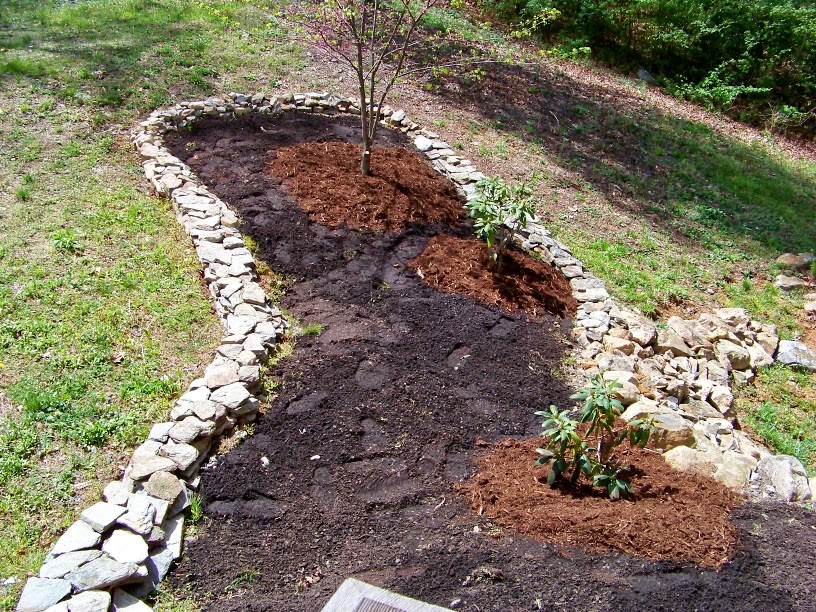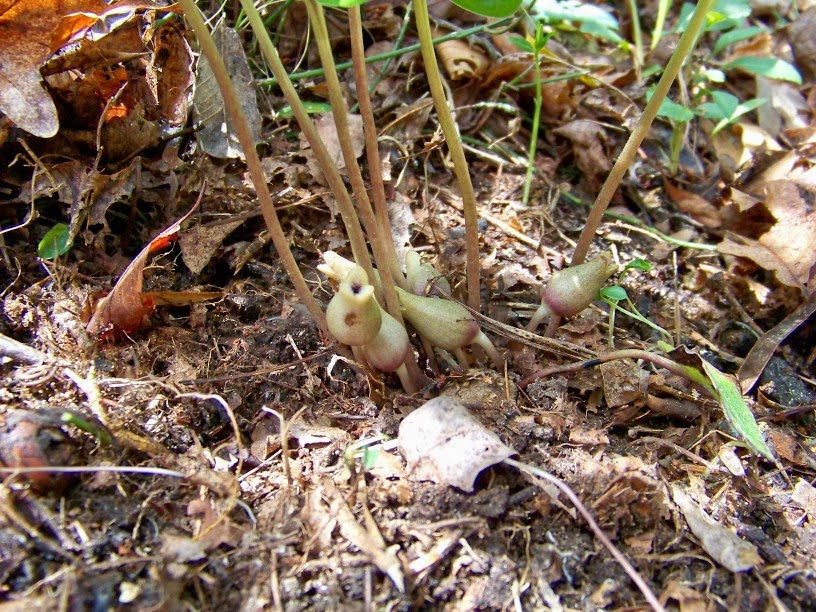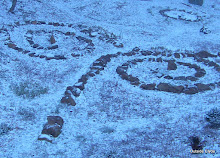I gathered up a bunch of extra rocks while getting another area ready for planting. They got tossed in a pile and then started to slither off.
The main new bed is ready to plant. I like to mulch first and then plant, but it can go either way. Thirty bags of composted manure and ten bags of mulch was all my little truck can safely haul on twisty mountain roads.
Two rhododendron were transplanted. They had been sitting on top of the ground with a little circle of stones around the two root balls that had been filled with compost. I dug actual holes for them and put them in the ground.
When that was done I wandered off into the wilds on the property. What's this? This Dwarf Crested Iris, Iris cristata, looks way darker than the ones we have. I know I gave her some, but she wouldn't have planted it here and here and there is more of it over there.
This patch in the other front bed must be the iris I gave her. It does look lighter.
So I pinched a flower for comparison. The lighter iris is the bottom flower. That is the iris we have.
This one looks darker to me. I'll be needing some of that.
I didn't see this wild ginger last time. This looks like the glossy evergreen form. We don't have that. We have the soft leafed deciduous ginger, Asarum canadense.
Little Brown Jugs is another common name for this ginger, Hexastylis arifolia. Those little jugs are the young flowers beginning to open. I'll be needing some of that.
There was plenty of the Halberd-Leaved Violet, Viola hastata, all over the place. I was gifted some of that last year. It came up this spring and is already sending out baby violet plants.
I went for another look at the Gay Wings, Polygala paucifolia while they were still in bloom. The ones that followed me home last time are alive and well, not as perky as these, but they just need to survive and come back next year. After that they can colonize.
All these little wild flowers spread by rhizomes above or below the surface. Keeping the rhizome alive is key to getting them established.
So far so good. I am having very good success with introducing new natives to join the existing crew in the wild cultivated gardens. Foraging in the wilds of suburban mountain subdivisions is as good as going to a nursery. Now where is that Painted Trillium?
Subscribe to:
Post Comments (Atom)















2 comments:
Isn't it fun to go around finding plants and flowers popping up every place? I am loving it.
I really enjoyed doing just that. Going in the woods to see what I could see. You are funny about that painted trillium. lol
Post a Comment